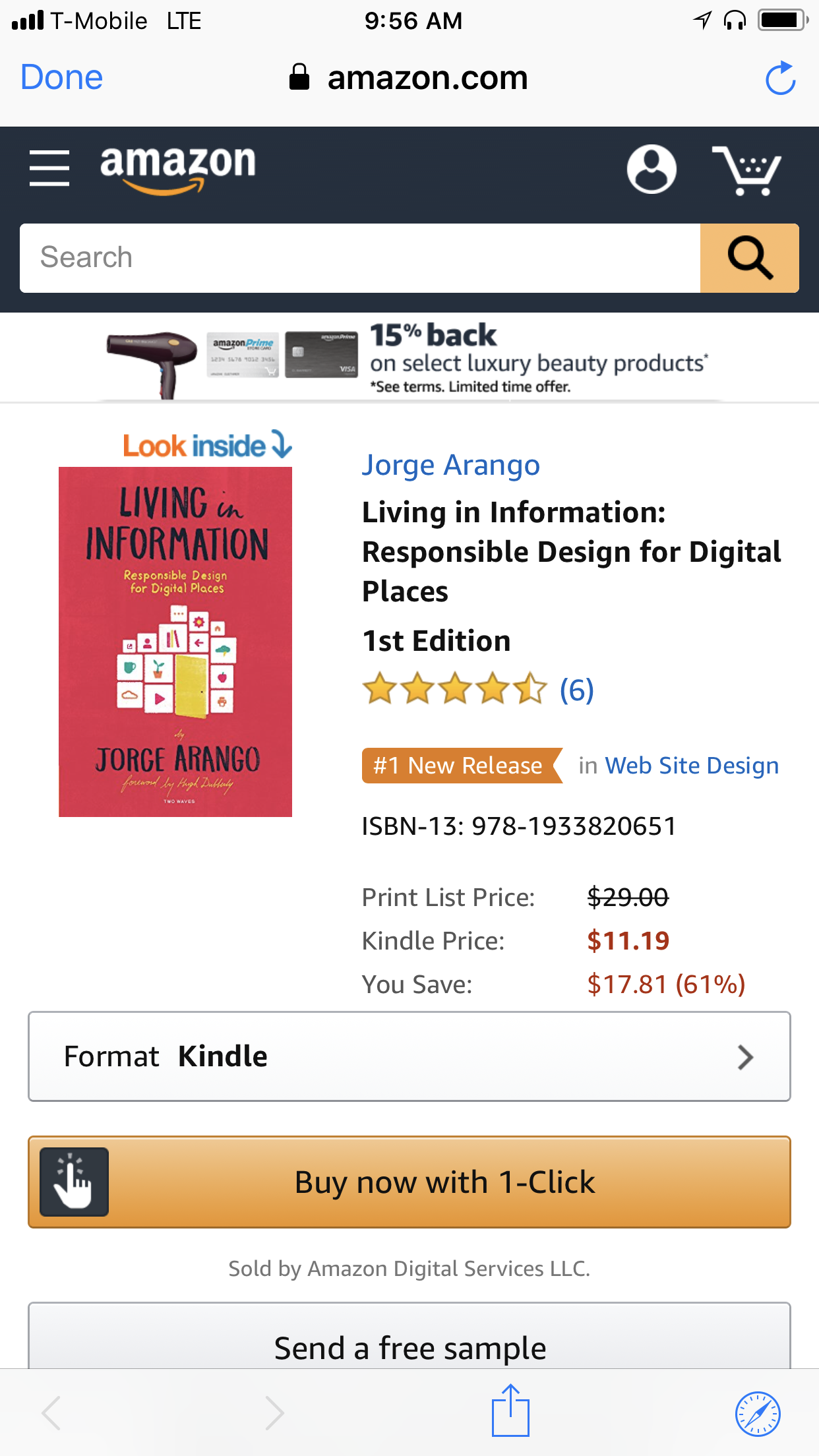I’ve worked in digital information environments for most of my career. Feedback loops in these systems are close to instantaneous. For example, you can see how many people are using your website almost in real-time. You can analyze their flows through the environment and make adjustments as required. Not so with books.
Living in Information has been out for a month. As you may imagine, I’m very keen to know how it’s received. There’s no equivalent to Google Analytics to see how a book is doing, so I’m cobbling information from various sources. For example, I’ve set up a saved Twitter search for the book’s title, which I check almost daily so I can interact with readers. And of course, I’m also regularly visiting the book’s Amazon page looking to see if people are leaving reviews.
(Please — if you’ve read the book, leave a review. It doesn’t need to be a five-star review; any rating helps. This article in USA Today explains why Amazon reviews are so critical.)
Shortly after launch, I was surprised to see this little notice on the book’s Amazon page:
Whoa /cc @RosenfeldMedia pic.twitter.com/zASBfIyUFP
— Jorge Arango (@jarango) June 16, 2018
“Bam!,” I thought. “#1 New Release in Ethics!” I was proud and excited. I can’t imagine ethics is a hot-selling category, but still… When I visited the book’s page a couple of days later, the little notice was gone. “Oh,” I sighed. “That was that.” But later that day I saw it again. And then, a few days later, I saw this:

Yikes! Web site design is a larger category than ethics. That must be a good thing, right? Still, I’m puzzled by the whole thing. Why were these banners appearing and disappearing? How were these categories chosen? How long is something considered to be a “New Release”?
I’ve been trying to find information about Amazon’s “#1 New Release” feature, but haven’t found details on how the algorithm works. (As expected; companies usually aren’t forthcoming with this sort of thing.) The one on my book’s page seems to change hourly. (At least.)
The “#1 New Release in…” banner probably affects book sales. I’ve run across it before as a buyer, and it’s influenced my understanding of how well-received a book is, encouraging me to check it out. It’s a good example of algorithmically-driven context-creating elements that can tweak an information environment to change behavior.
Amazon links on this page are affiliate links. I get a small commission if you make a purchase after following these links.